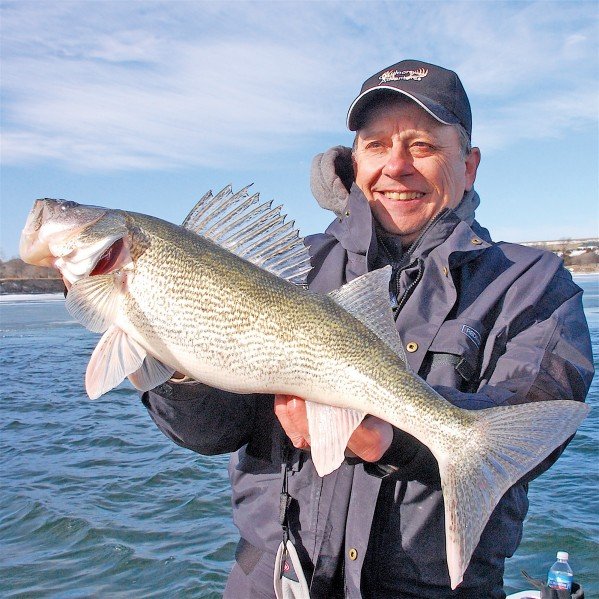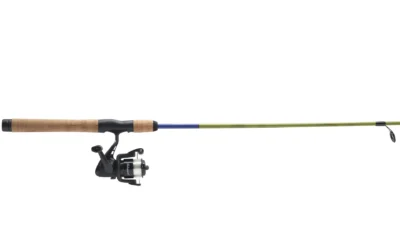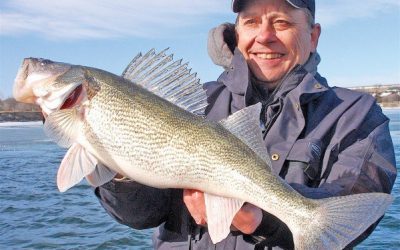Fishing Low-light periods of the day morning and dusk is a very productive time to fishing for walleyes.
Walleyes are native to Canada and found, in the Great Lakes, the Missouri River basin and the upper Mississippi River basin, walleyes were introduced in the western and northeastern United States, preferring the cool, deep, quiet waters of rivers, lakes, and reservoirs.
The walleye is named for its pearlescent eye, which is caused by the tapetum lucidum, a reflective layer of pigment that helps the fish to see and feed at night or in turbid water.
Walleye are mostly nocturnal and during the day are often found in deeper under the structure cover of tree roots, logs, and aquatic plants, feeding at night, coming up from the deeper water to feed.
What they’re on is what’s available, these include small fish, large invertebrate, a cold-blooded animal with no backbone. which can live on land insects, such as spiders, and worms—or in water, and insects, feeding during lowlight periods, primarily at dusk and dawn.
Walleye spawn in the spring or early summer, spawning over gravel or rocks in rivers or shallows, where there’s enough of a current to clear away sediment and aerate their eggs.
Females can deposit more than 100,000 eggs, with them hatching in about two weeks, with walleyes living about 10 years.
As summer sets in and water temperatures rise, summer walleye fishing can become increasingly difficult, but once you locate where they are using the right presentation, you’ll starting picking up walleyes up.
During summer months when lake vegetation is peaking, try spending time around weeds like coontail, milfoil, lily pads and cabbage weeds, which can hold schools of baitfish and new insect hatches. Weeds near current or deeper water will typically hold more fish so focusing on these high percentage spots will pay off.
Fishing with jig in and around weed lines and through grassy patches will help you locate the active fish. If the fish are more lethargic, try rigging up a more subtle live bait rig to coax the reluctant fish. Walleye will be feeding during low light conditions, so try to fish around sunrise or sunset for the best results.
As water temps continue to rise, fishing deeper, as summer walleye will relate to points, main lake basins, break lines, weed lines and river channels.
An added bonus is that fish in deeper water are usually a bit more aggressive during the day, so if you’re limited to fishing while the sun is up, try staying out deep.
Trolling the Northland Tackle Walleye Spinner Rig crawler around points and through river channels will interest fish closely related to the bottom. If the fish are suspended in the water column, try trolling crankbaits which are an ideal presentation for the suspended summer walleye.
During low-light conditions fish will move up to shallower water so make sure to adjust accordingly as conditions change.
Fishing walleye at night can be a very effective way to catch not only a limit but also a wall hanger. Walleye will typically move up to shallower flats, bars or points to gorge on available forage at night.
When fishing shallow cover at night, using a ‘snag-free’ rig will help you keep your line wet and also keep you in action.
A great way to target walleyes at night is with slip-bobber like the Rod-N-Bob Slip Bobber. If you need added visibility, attach a glowing indicator to the top of your rig. Then, pinch on a few split shots about 12 inches above the hook which will help keep your bait in the strike zone. Rig up a lively leech or crawler and just wait, that bobber should disappear in no time.
Use this rig in any of your ‘High Percentage’ spots, or when the bite gets tough and a finesse approach is needed to get bit.
Walleyes can be taken using jigs, live bait rigs and crankbaits, but you never know what will trip their figure, so you need to keep changing baits until the walleye let you know what they are after.
t they are after.





0 Comments